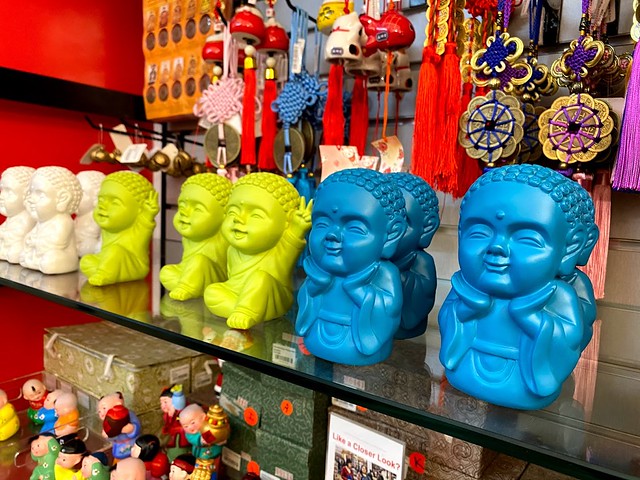
Happy Birthday Buddha! Five of His Symbolic Positions and What They Mean
Today is the Vesak Festival, an annual celebration that commemorates the birth and enlightenment of Buddha Gautama. Buddhists around the world pay homage with visits to temples, doing good deeds, meditation, and sharing food.
The Buddha comes in many different incarnations and is represented in various mudras, or symbolic gestures. Each position is full of meaning. Here are five of them and what they represent.
Bhumisparsha Mudra
In this mudra, the Buddha is seated with his right hand resting on his knee, palm facing inward, and fingers pointing toward the earth (hence, the translation of Bhumisparsha, “touching the earth” or “calling the earth to witness”). His left hand rests in his lap with the palm up.
This position represents the moment the Buddha attained enlightenment, or Nirvana, under the Bodhi tree.
Varada Mudra

This mudra embodies compassion and charity. The Buddha’s left hand lies in his lap, often holding a lotus flower. This flower is one of the eight Buddhist treasures and represents purity and perfection. His right arm reaches downward with the palm facing out.
His five extended fingers represent generosity, morality, patience, effort, and concentration. These are referred to as the five perfections.
Dhyana Mudra

In the Dhyana mudra, the Buddha’s hands rest in his lap. The back of the right leans into the left, and the thumbs touch each other, forming what’s call the mystic triangle.
This is the meditation mudra, which symbolizes wisdom. It’s believed that the Buddha was in this position when he attained enlightenment under the Bodhi tree.
Reclining Buddha

This very relaxed looking Buddha represents tranquility and complete detachment from earthly desires. It’s thought that this was his position in his final hours before reaching Nirvana — a state of complete freedom from mundane needs and wants, according to Buddhist belief — and passing away.
Laughing Buddha
Then there’s the laughing Buddha, who isn’t Buddha at all by a jolly monk turned deity called Budai. He represents wealth and good fortune. Rubbing his big belly is believed to bring good luck.
Learn more about symbolic figures in Buddhism in our posts on the Goddess of Mercy, the peony, and the elephant.

